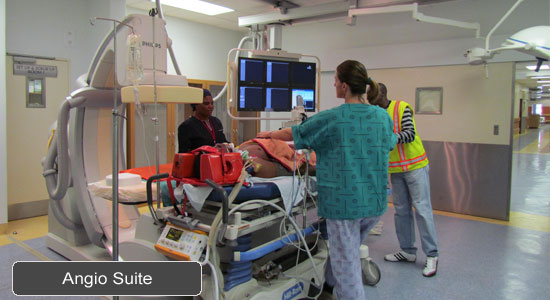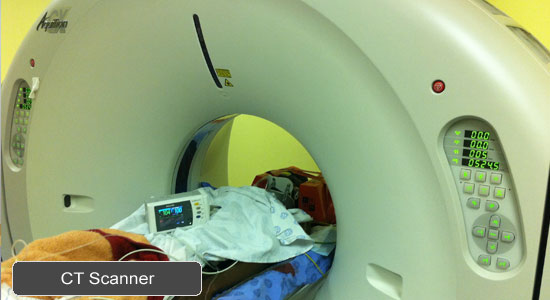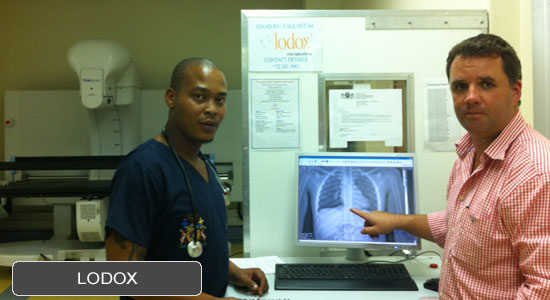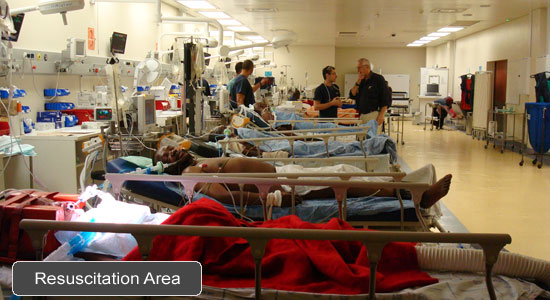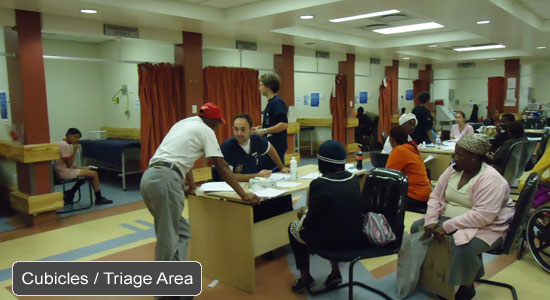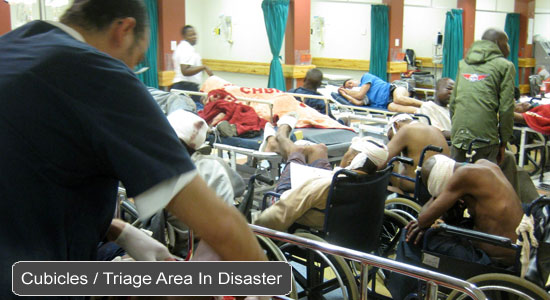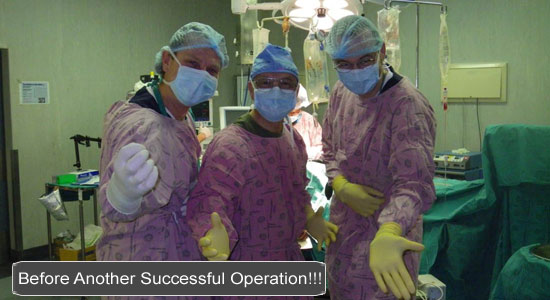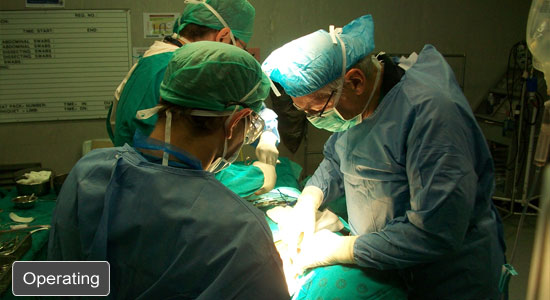TRAUMA UNIT
"Surgical Pit": Trauma Resuscitation Area
The resuscitation, operative management and post-operative care of all P1 patients are under the supervision of an in-hospital trauma consultant, who covers a 24 hour slot. The Resuscitation area has sixteen resuscitation bays. All physiologically stable patients have a total body scan with a LODOX (Low Dose X-ray) machine on admission. The Unit staff has sole responsibility for the patients' resuscitation including ventilation. Extended trauma ultrasound (e-FAST) is performed by the Unit staff. The CT scanner, the angio-, and screening suites are at a distance of 50 meters.
"Surgical Pit":Cubicles / Triage Area
It consists of 11 examination cubicles with ventilation facilities in case of an unexpected emergency.
Between the trauma resuscitation area and the cubicles, there is a large triage area that can accommodate up to 40 patients on trolleys, in case of disasters.
Emergency Theatres
There are three dedicated 24 hour functioning emergency theatres, that can become four if need arises, at a 30 meter distance from the resuscitation area.
Trauma Intensive Care Unit
The Trauma Intensive Care Unit consists of eight dedicated trauma beds that are managed collectively with the General ICU staff. Trauma consultants rotate on a five week basis through ICU.

Trauma Ward
The Trauma Ward consists of 56 acute beds. There are also 25 step-down trauma beds in other parts of the Department of Surgery. This number of acute/step-down beds is usually insufficient and trauma patients overflow to other wards; the most patients that have ever been admitted under Trauma Unit care at one time is 184 patients.



